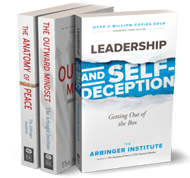Unleashing Ego-Free Innovation

Many organizations struggle to innovate. Despite their best efforts to foster creativity, out-of-the-box thinking, and problem-solving among their employees, they remain behind the curve and behind their competition. The main reason? The organizational culture fails to support employees in bringing creative ideas to the table. Indeed, in a nod to Peter Drucker’s famous saying about culture and strategy, the 2015 State of Global Innovation report quipped, “culture eats innovation for breakfast.”
Self-Focus Blocks Innovation
As an artist, I know what it is like to identify myself and my worth too closely with what I create. With a driving need to be cutting-edge, new, daring—innovative—I also know all too well how quickly we can become self-absorbed in the pursuit of new levels of creativity. When we are self-focused, we become untethered from the reality of other people.
And becoming untethered from the reality of others is what kills creativity. The best innovations provide meaningful services to others; they create meaningful experiences for others. This principle applies not only to artistic creativity but to any endeavor that might benefit from innovative thinking and ideas. It applies to problem-solving, process improvement, customer service, leadership, management, and more. When we’re in service to ourselves, we cannot do any of these things as innovatively as we can when we’re in service to others.
Systemic Self-Focus Leads to Low-Innovation Cultures
Just as self-focus blocks innovation at the individual level, the same is true in organizations. A low-innovation culture is caused in large part by a systemic focus on self: an egocentric “inward mindset” held by the people in the organization. To the extent that individuals in the organization focus on themselves—their goals, their results—they’re blind to the needs and objectives of the organization, their colleagues, their managers, and their customers. And because they’re blind, they cannot anticipate what might be helpful to these groups of people.
It’s this anticipation, born of curiosity and connection to others, that fosters real innovation. It’s only in response to the needs, challenges, and desires of others that stunningly creative innovation—the kind of innovation that springs an organization ahead of its competition—is born.
Innovate by Seeing Others
When you dig into the process that individuals and organizations follow in producing remarkable levels of innovation, you see a specific pattern at work—a pattern you can discipline yourself and your organization to replicate even in industries or environments that might be hampered by regulation, mired in conflict, or fixated on personal credit and acclaim.
Innovate for Others
Pixar is an example of a creative powerhouse where this pattern is evident in the process they have created. Their process is more important than any single individual contributor—a principle they prove by using a different director on every film they produce. Their process helps them eliminate the self-focus of ego in order to consistently achieve truly groundbreaking products over and over again. They have found in their own efforts the following truth, expressed by Michael Arndt, the writer of Toy Story 3:
I invite you to consider the following questions in your own work—the work you do as an individual, the work your team is currently producing, or the work of your entire organization.
Wherever we are and whatever we do, this pivot marks the end of ego and the beginning of creative innovation.
 Mitch Warner is a bestselling author and managing partner at the Arbinger Institute. Arbinger has published three books with Berrett Koehler: Leadership and Self-Deception, The Anatomy of Peace, and The Outward Mindset. Mitch writes frequently on the practical effects of mindset at the individual and organizational levels as well as the role of leadership in transforming organizational culture and results. Mitch is an expert on mindset and cultural change, leadership, strategy, performance management, organizational turnaround, and conflict resolution. Trained in fine arts at the Art Students League and the National Academy, Mitch spends much of his free time painting. His work hangs in organizations nationwide.
Mitch Warner is a bestselling author and managing partner at the Arbinger Institute. Arbinger has published three books with Berrett Koehler: Leadership and Self-Deception, The Anatomy of Peace, and The Outward Mindset. Mitch writes frequently on the practical effects of mindset at the individual and organizational levels as well as the role of leadership in transforming organizational culture and results. Mitch is an expert on mindset and cultural change, leadership, strategy, performance management, organizational turnaround, and conflict resolution. Trained in fine arts at the Art Students League and the National Academy, Mitch spends much of his free time painting. His work hangs in organizations nationwide.
